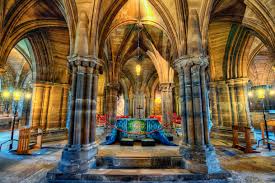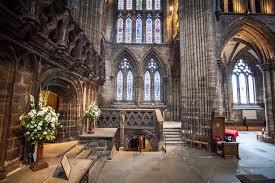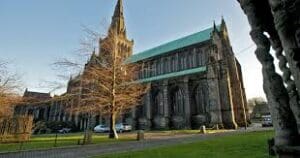Description
Glasgow Cathedral, also known as St. Mungo's Cathedral or the High Kirk of Glasgow, is one of the most significant and best-preserved medieval buildings in Scotland. Located in the heart of Glasgow, it stands on the site where St. Mungo, the city’s patron saint, is believed to have been buried in the 7th century. The current structure dates primarily from the 12th to the 15th centuries and is a rare example of a Scottish medieval cathedral to have survived the Reformation largely intact, without being turned into ruins or extensively rebuilt.
Architecturally, the cathedral is a masterpiece of Gothic design, with striking pointed arches, ribbed vaults, and detailed stone carvings. One of its most distinctive features is the crypt beneath the main floor, which houses the shrine of St. Mungo and serves as a powerful spiritual and historical focal point. The interior is rich with stained glass and intricate woodwork, while the soaring nave and choir reflect the craftsmanship of the medieval stonemasons who built it. Over the centuries, it has served as a religious, cultural, and civic landmark for the city.
Today, Glasgow Cathedral is a functioning Church of Scotland parish church and a popular tourist destination. Managed by Historic Environment Scotland, it plays an important role in preserving the city’s heritage and hosting public events. The cathedral’s proximity to the Glasgow Necropolis and the medieval heart of the city enhances its appeal as a key stop for those interested in Scottish history, architecture, and religious tradition.
Location
-
Cathedral Precinct, Glasgow G4 0QZ, UK






